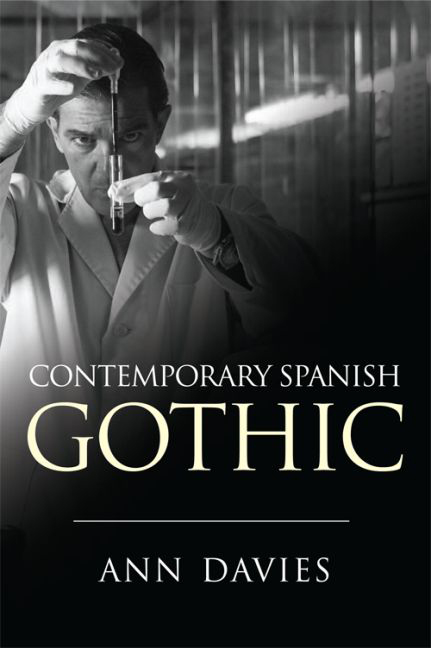Book contents
- Frontmatter
- Contents
- List of Figures
- Acknowledgements
- 1 Introduction
- 2 Heritage Gothic: Goya Biopics
- 3 The Gothic Bestseller: The Circulation of Excess
- 4 The Gothic House: Problematising the National Space
- 5 The Gothic Camera: Javier Aguirresarobe at Home and in Hollywood
- 6 Gothic Medicine: Written on the Body
- 7 Conclusion
- Filmography
- Bibliography
- Index
5 - The Gothic Camera: Javier Aguirresarobe at Home and in Hollywood
Published online by Cambridge University Press: 27 April 2017
- Frontmatter
- Contents
- List of Figures
- Acknowledgements
- 1 Introduction
- 2 Heritage Gothic: Goya Biopics
- 3 The Gothic Bestseller: The Circulation of Excess
- 4 The Gothic House: Problematising the National Space
- 5 The Gothic Camera: Javier Aguirresarobe at Home and in Hollywood
- 6 Gothic Medicine: Written on the Body
- 7 Conclusion
- Filmography
- Bibliography
- Index
Summary
This chapter looks at the Gothic work of renowned Spanish cameraman Javier Aguirresarobe. Aguirresarobe is one of the leading directors of photography in Spanish cinema's contemporary era, having had a long career in Spain arising from the vanguard of Basque film-making in the 1980s. This included working with Imanol Uribe, the leading Basque director throughout the 1980s. In the 1990s he worked regularly with Pilar Miró, Spain's leading female director of the era, while, over the years, he has also worked with prominent Spanish directors such as Julio Medem, Pedro Almodóvar, Alejandro Amenábar, Víctor Erice and Fernando Trueba. From the turn of the century, he has also established an international reputation through working with Woody Allen, Miloš Forman, and James Ivory. Much of his current output emanates from Hollywood, and this includes involvement in Hollywood's highly successful and perhaps most notorious recent franchise, the Twilight series, based on the books by Stephenie Meyer. The cameraman's resumé demonstrates work across a wide variety of genres and is not by any means confined to horror and Gothic film-making; some of the most successful films he has worked on, however, come from this genre.
In the discussion here, I shall first focus on two examples of Aguirresarobe's explicitly Gothic landscapes that he created on Spanish soil: La madre muerta (The Dead Mother, Juanma Bajo Ulloa 1993) and The Others (Alejandro Amenábar 2001). I shall then discuss his more recent work in the United States and, specifically, his work on The Twilight Saga: New Moon (Chris Weitz 2009), the second instalment in the Twilight film saga, to look at the ways in which Aguirresarobe's work contributes to an idea of Gothic cultural exchange. The notion of a specifically Spanish contribution is from the outset undermined by Aguirresarobe's roots in the Basque Country and his contribution to the establishment of a specifically Basque cinema. This has occurred primarily through his work with Uribe, particularly on key films, such as El proceso de Burgos (The Burgos Trial, 1979), La fuga de Segovia (The Flight from Segovia, 1981) and La muerte de Mikel (The Death of Mikel, 1984), which remain landmarks in the development of a specifically Basque cinema after the end of the Franco dictatorship.
- Type
- Chapter
- Information
- Contemporary Spanish Gothic , pp. 111 - 137Publisher: Edinburgh University PressPrint publication year: 2016



